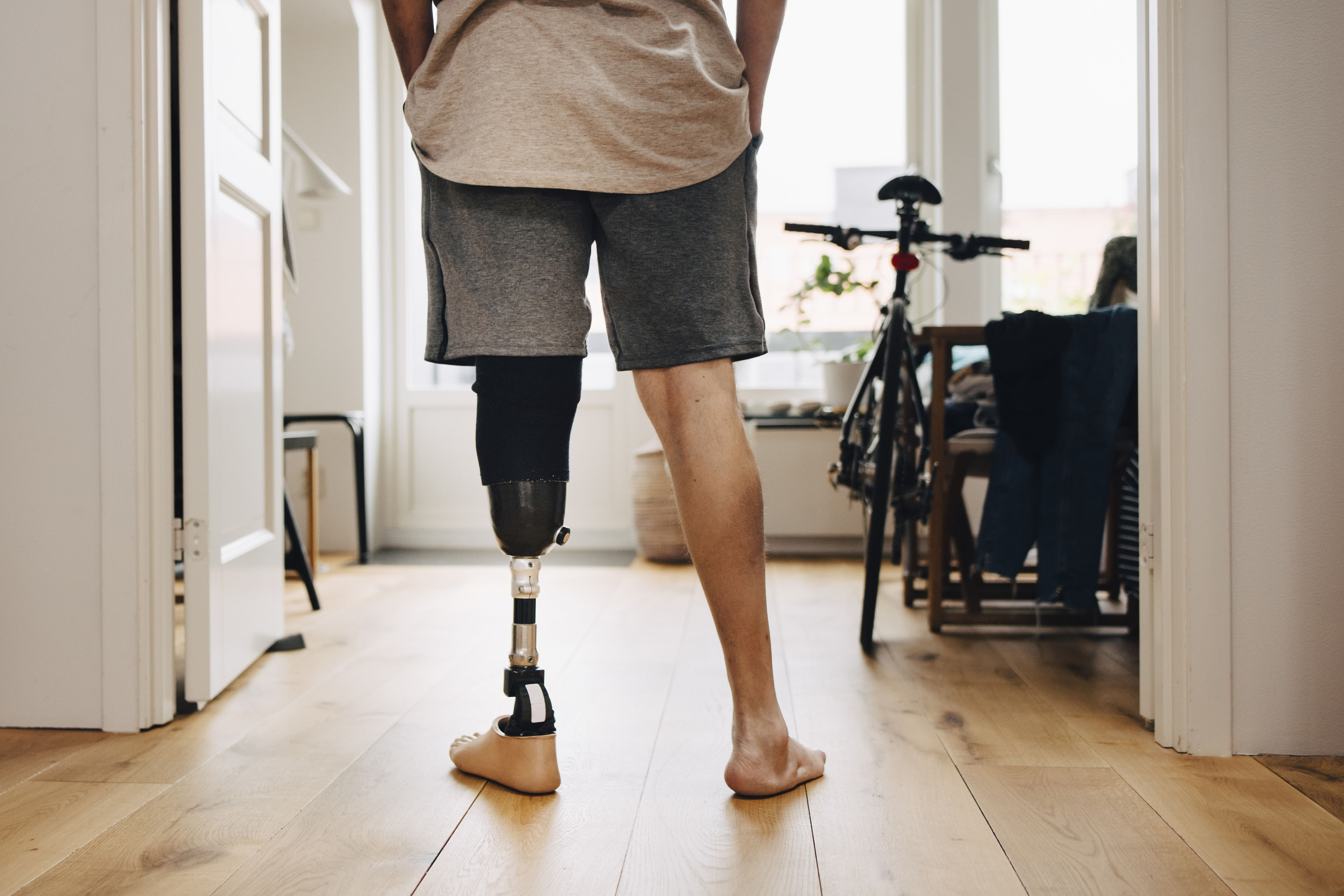You’ve probably heard that vitamin D is important to staying as healthy as possible – and it’s true. Vitamin D is an essential nutrient for building healthy bones, absorbing calcium and maintaining a healthy immune system. It even plays a role in how our nervous system functions and cell growth.
Vitamin D is one of the rare vitamins that your body can make on its own. When your skin is exposed to ultraviolet B (UVB) rays from the sun, your body produces an inactive form of vitamin D known as vitamin D3. The liver and kidneys then convert it into an active form. Getting enough sun isn’t always easy, especially during long Midwestern winters when it seems like you never see the sun, or if you spend long days inside for work.
Five to thirty minutes of daily sun exposure is a great natural source of vitamin D. But luckily, it’s not the only way to get your vitamin D. Keep reading to learn why vitamin D is important for your body and the best foods to eat to get more.
Benefits of vitamin D for our health
Vitamin D is essential for maintaining many body systems, including your immune system and hormone regulation. But its most important role is that it helps our bodies absorb calcium, which promotes healthy bones. As women age, vitamin D is especially important in helping to prevent osteoporosis, diabetes and weight gain. Men need vitamin D to support healthy muscle development and testosterone.
Vitamin D may also play a role in mental health – some research suggests that a lack of vitamin D can result in depression-like symptoms. However, more research is needed to determine if there's a direct link between depression and a vitamin D deficiency, and if dietary supplements could help ease the symptoms of depression.
Vitamin D deficiency makes it hard to get enough calcium
Calcium is an essential nutrient that your body needs to help with blood clotting, regulating muscle movement and heart health. It’s also vital for bone health. However, vitamin D and calcium are codependent – they don’t work well without each other, and when they’re not performing together, your body can suffer. Vitamin D is essential to the absorption of calcium. Without enough vitamin D, your body can only absorb about 10-15% of the calcium you consume.
Chronic vitamin D deficiency – and thus, calcium deficiency – increases the risk of skeletal issues and conditions. Without these necessary nutrients, children can develop rickets, a disease that causes their developing bones to grow weak and soft. Pregnant women may have babies with lower bone mass. A lack of vitamin D can also cause bones to lose density, increasing the risk of osteoporosis. People can also experience muscle-related symptoms, such as aches, weakness and cramps.
Foods rich in vitamin D
Even if you don’t live in a sunny climate, you can still boost your vitamin D intake with the foods you eat. There are plenty of delicious, vitamin D-rich options.
At the top of the list: Oily fish and red meat
Oily fish and red meat are super rich in vitamin D, but you’ve got options when it comes to meat, fish and eggs. You can get healthy amounts of vitamin D from the following:
- Salmon: This superfood is rich in many vitamins and nutrients, including vitamin D.
- Liver: Love it or hate it, there’s no denying that liver is an excellent source of vitamins and minerals, including vitamin D.
- Red meat: Whether it’s ground beef or steak, red meat is a good source of vitamin D. Consider adding lean ground beef to hot dishes or taco night for an extra boost.
- Tuna: Fresh, frozen or canned, tuna is a quick and easy way to get your vitamin D.
- Pork chops: This dinner staple is a great and tasty way to increase your vitamin D.
- Eggs: Yolks of eggs are particularly high in vitamin D. Get a good amount of vitamin D before breakfast is over by choosing frittatas, an omelet or even just scrambled eggs.
Mushrooms for vitamin D
If you’re not big on red meat or fish, consider eating more mushrooms. Some mushrooms, particularly those grown under natural or artificial UV light or sundried, are excellent plant-based sources of vitamin D. White and cremini (baby bella) mushroom varieties are standouts in this category. They do lose some of their vitamin D content when cooked, so try them raw by adding them to your favorite salads.
Dairy products and fortified foods
Milk, yogurt, cheese and butter are all rich in vitamin D, too. Milk and yogurt are typically fortified with vitamin D, which makes them among the best ways to get the nutrient. Other fortified options include soy milk, tofu and breakfast cereals.
Getting the right amount of vitamin D
Whether or not we notice if we’re getting enough vitamin D, our bodies do. It’s important to get enough vitamin D for bone health, hormone function and the health of our immune system. Recommended amounts of vitamin D are measured in international units (IU), and how much you need depends on factors such as age and sex.
How much vitamin D do you need each day?
The amount of vitamin D you need every day depends on your sex and how old you are. Vitamin D is essential starting at your very first breath. Infants from birth to 1 year old need 400 IUs a day to make sure their developing bones and teeth start and stay healthy.
Children and adults ages 1-70 need about 600 IUs a day of vitamin D. This can vary based on other health factors, but unless you’re experiencing any other health concerns, 600 IUs is a good goal for most people.
An exception to the 600 IU rule for children and adults is for women over 40. Women lose bone density faster than men, tend to have smaller and thinner bones, and experience loss of bone-protecting estrogen during menopause. These factors make women more susceptible to osteoporosis and bones that break more easily. Doctors recommend 800 IUs daily for women over 40.
And adults over the age of 70 should consume about 800 IUs of vitamin D daily. Older adults are also at a higher risk for osteoporosis, in addition to cancer and heart disease. Adequate vitamin D levels can help prevent these illnesses.
In very rare cases, you can take too much vitamin D and develop hypervitaminosis D, also known as vitamin D toxicity. It’s not possible for your body to get too much vitamin D from the sun or the nutrients you eat. The only way to develop vitamin D toxicity is by consuming too many vitamin D supplements. Studies suggest vitamin D toxicity occurs when someone takes 60,000 IUs of vitamin D a day (that’s approximately 100 times the recommended daily intake) for a period of months. Symptoms of vitamin D toxicity include:
- Nausea
- Vomiting
- Frequent urination
- Weakness
When your body has too much vitamin D, it causes a buildup of calcium and could eventually lead to kidney and bone problems. Treating this rare occurrence is usually straightforward and involves stopping your vitamin D and calcium supplements to reduce the effects of too much vitamin D.
Symptoms of low vitamin D
While most of us could probably use more vitamin D, being medically deficient in vitamin D is rare. Some conditions, like osteoporosis, kidney disease, liver disease, Crohn’s disease and celiac disease, are associated with vitamin D deficiency. For those who do have a vitamin D deficiency, it’s important to get treatment. Symptoms of vitamin D deficiency include:
- Muscle aches
- Bone aches
- “Pins and needles” feeling in hands and feet
- Feeling weak
- Thinning hair
- Unexplained weight gain
Vitamin D deficiency treatment is often as easy as boosting your diet with foods rich in vitamin D, but your doctor may recommend supplements as well. Schedule a visit with your primary care doctor if you feel your vitamin D levels may not be where they should be. They’ll be able to determine what next steps will be best for you.
If you are concerned about getting enough vitamin D, contact your primary care doctor. They can make suggestions to help you plan the best course of action.


![No-Bake Banana Nut Vegan Protein Bars [gluten-free + no added sugar]](https://i0.wp.com/healthyhelperkaila.com/wp-content/uploads/2020/04/BananaNutBarsFeatured-copy.png?fit=800%2C800&ssl=1)
![Healthy High-Protein Copycat Peanut Butter Chocolate Chip Crumbl Cookies [No Sugar Added]](https://i0.wp.com/healthyhelperkaila.com/wp-content/uploads/2024/07/PBCrumblCookiesFeatured.png?fit=1515%2C1515&ssl=1)















 English (US) ·
English (US) ·